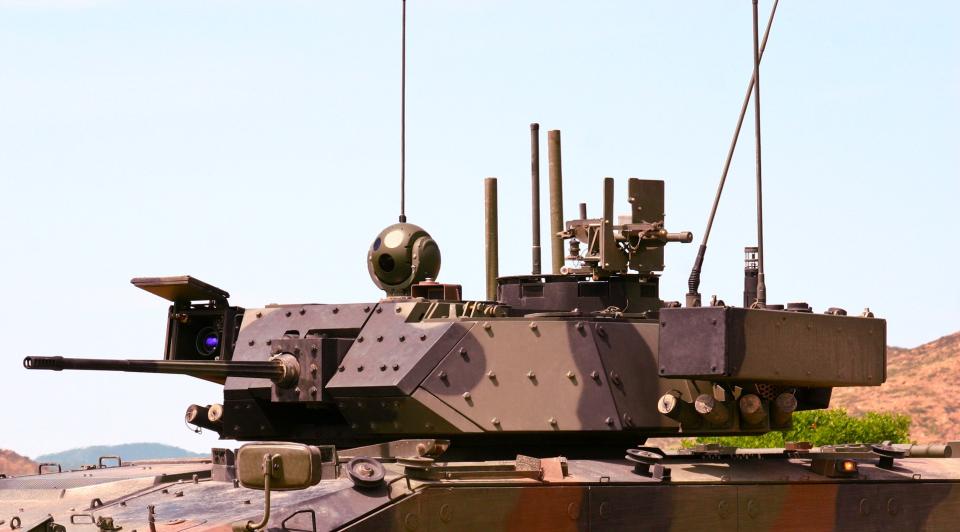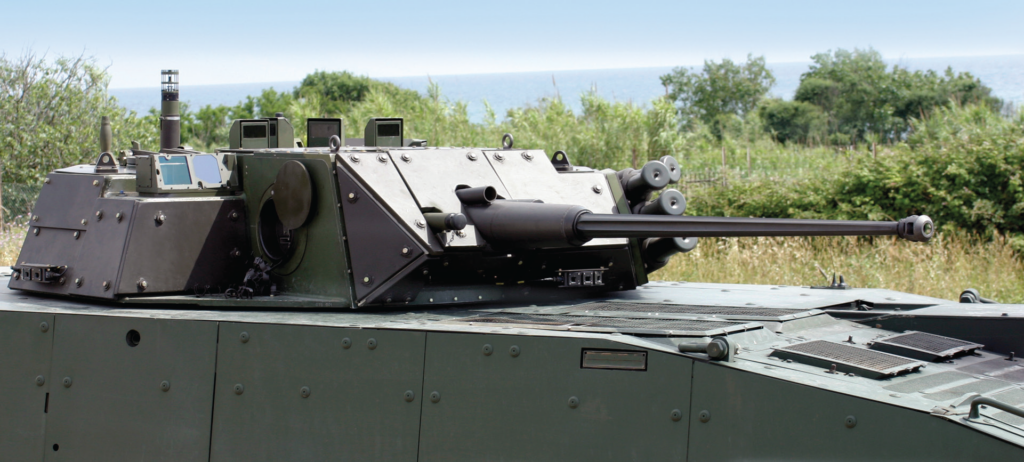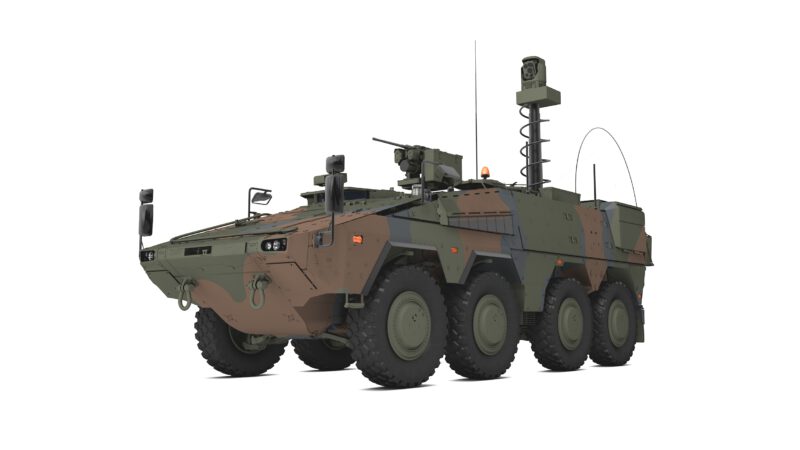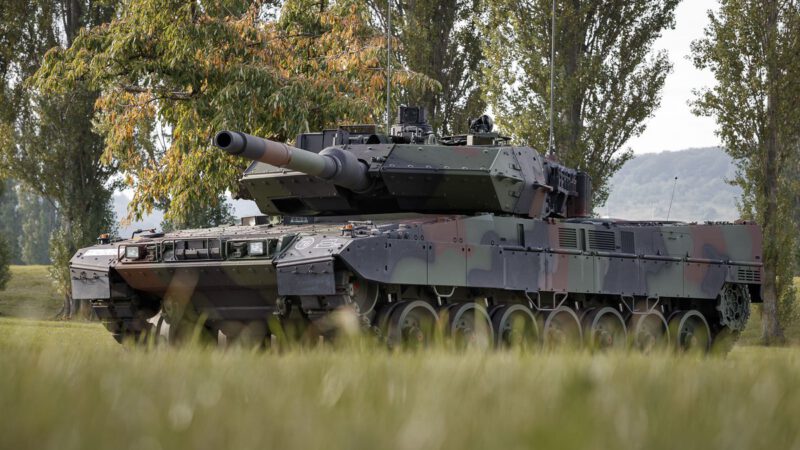CIO reveals proposal for Italian AICS program

CIO (Consorzio Iveco-Oto Melara), a consortium consisting of the partially (30.2%) state-owned Italian company Leonardo and Iveco, has revealed a first 3D rendering of its offer for the Italian Army’s Armored Infantry Combat System (AICS) program. The goal of this program is to replace the Dardo infantry fighting vehicles (IFVs) and the venerable M113 armored personnel carriers (APCs) with a new, modern solution. According to RID, the Italian Army has issued an requirement for a total of 679 vehicles. The costs of the AICS project are expected to be about six billion euros, but at the current stage only a few million euros have been approved for the next year; however a total of €2.141 billion euros is already secured for the program until 2035.
The infantry fighting vehicle proposed by CIO has a very conventional layout: it features a front-mounted power pack with the driver being seated next to the engine, a well sloped glacis plate, a two-men turret located in the center of the IFV, and a large dismount compartment in the rear including a large ramp for ingress and egress. The new vehicle designed for the AICS program uses a drivetrain containing seven road wheels, and is fitted with steel tracks featuring rubber-pads – on many other IFV designs, the manufacturers have opted for lighter rubber band composite tracks. In a fashion similar to other IFVs such as the CV90, the Dardo, the Marder and the Lynx IFVs, the exhaust system of CIO’s new design for the AICS program is located at the rear. A rear exhaust makes the vehicle layout a bit more complicated, but has a positive impact on the thermal signature when the vehicle is seen from the front.
The new IFV from CIO is fitted with a variant of Leonardo’s Hitfist turret, similar to the one already fielded on the Freccia 8×8 wheeled IFV. As this turret is expected to offer commonality with the already fielded Hitfist designs, it is believed to be substantially cheaper – especially when considering the aspect of logisitics – than a brand new turret design, though performance may be lackluster in some aspects compared to a state-of-the-art solution. Curiously CIO has proposed to use an unmanned Hitfist OWS for the next version of the Freccia IFV, i.e. the so-called Freccia Evo.
The Hitfist turret on CIO’s current design is apparently fitted with a fully stabilized Northrop-Grumman’s Mk 44 Bushmaster II chain gun chambered in the 30 x 173 mm caliber. When mounted in a Hitfist turret, the gun has a maximium depression of -10° and a maximum elevation of 60°. The Mk 44 Bushmaster chain gun has also been proposed as potential main armament for the Freccia EVO. In addition to its main gun, a coaxial machine gun of currently unspecified type is also located in the turret. Based on the extremely limited imagery, the 30 mm Mk 44 Bushmaster gun as fitted to CIO’s new IFV includes a magnetic coil at the tip of the barrel, which is used for setting the fuze of programmable air-burst munition (ABM) rounds. The vehicle appears to not feature any anti-tank guided missile (ATGM) launchers, which is in line with current Italian IFV. Only a small number of Italy’s IFV fleet has been fitted with Spike-LR ATGM launchers: twenty of the tracked Dardo IFVs and 36 wheeled Freccia IFVs in the Combat controcarro (Combat anti-tank) version have received such systems. Two banks of four smoke grenade dischargers each provide the Hitfist turret with a self-defence capability.

In case of the new AICS proposal by CIO, a tall wire cutter and meteorological mast are installed on top of the turret. Furthermore Leonardo’s Janus RSTA sight is provided as independent optic for the commander. The dtr features an eye-safe laser rangefinder with 20,000 metres range, a third generation thermal imager based on a 640 by 512 element MCT focal plane array (FPA), and a CCD daylight camera for a 530 TV line resolution, which provides output in the standard PAL format. According to Leonardo, this optic allows the crew to detect a tank-sized target at nearly 15 kilometres distance, recognize the same target at circa 5 kilometres distance and identify it at nearly 2.5 kilometres distance. It is possible that an upgraded version of the Janus sight will be used by CIO; at least the daylight camera’s performance is not up to the standards of current products offered by Leonardo and its competition.
At the current stage not much is known regarding the protection level, weight and power pack of CIO’s new IFV design. The fact that it features seven road wheel pairs as well as the usage of conventional steel tracks suggests a higher combat weight compared to Dardo & Freccia, which also would suggest that the proposed IFV for AICS reaches a higher level of ballistic and mine protection compared to the previously mentioned earlier vehicles. It wouldn’t be surprising that a ballistic protection level in accordance with STANAG 4569 Level 6 and mine protection level in accordance with STANAG 4569 Level 4a/b is desired; at least this seems to be the usual requirement in multiple currently on-going IFV procurement programs.
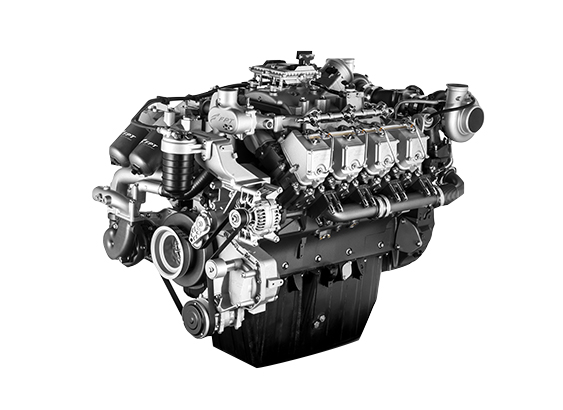
It has been speculated that the new IFV offered by the Consorzio Iveco-Oto Melara might utilize the FPT V20 engine made by the Italian company FPT Industrial S.p.A.; a smaller version of this engine is already fielded on the Centauro II mobile gun system/tank destroyer. The FPT V20 features eight cylinders in a 90° V configuration and has a displacement of 20 litres. Is uses common rail injection and a turbocharger to reach a maximum output of 670 kW (911 horsepowers) at 1,800 rpm. The engine can provide a maximum torque of 4,100 Nm at 1,500 rpm. The FPT V20 has a weight of 1,600 kilograms. It might be coupled to a hybrid electric drive capable transmission.

Italy has a history of purchasing locally made vehicles, i.e. designs of its own (partially state-owned) industry. Over different restructurings most of this has ended becoming part of CIO. The lack of competition against foreign designs and being designed strictly for the domestic requirements has resulted in the Italian Army fielding a number of unique armored fighting vehicles (AFVs) with only limited export success – Iveco’s LMV being the big exception to this rule. However it is worth noting that Rheinmetall Italia has proposed the Lynx KF41 IFV as alternative to CIO’s design. The vehicle is offered with local industry involvement (including “italization” by using locally made components) and as part of a Italian-German defence cooperation agreement, that also might lead to Italy gaining access to the Main Ground Combat System (MGCS) program. Under the MGCS program a multi-platform next-generation combat system is being developed, which will replace the Leclerc and Leopard 2 main battle tanks (MBTs) in the near future.
